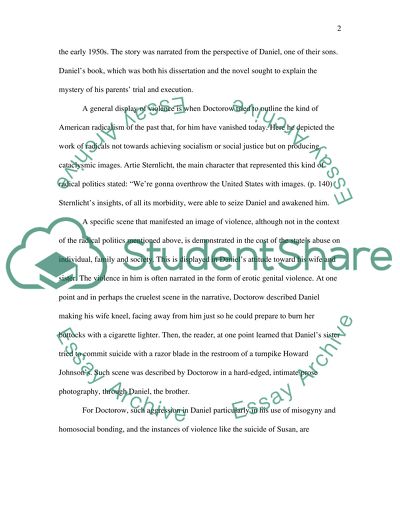Cite this document
(The Theme of Violence in Doctorow's The Book of Daniel, Herr's Literature review, n.d.)
The Theme of Violence in Doctorow's The Book of Daniel, Herr's Literature review. Retrieved from https://studentshare.org/social-science/1561884-discuss-violence-andor-cruelty-in-the-at-least-two-texts-you-have-studied-in-this-course
The Theme of Violence in Doctorow's The Book of Daniel, Herr's Literature review. Retrieved from https://studentshare.org/social-science/1561884-discuss-violence-andor-cruelty-in-the-at-least-two-texts-you-have-studied-in-this-course
(The Theme of Violence in Doctorow's The Book of Daniel, Herr'S Literature Review)
The Theme of Violence in Doctorow's The Book of Daniel, Herr'S Literature Review. https://studentshare.org/social-science/1561884-discuss-violence-andor-cruelty-in-the-at-least-two-texts-you-have-studied-in-this-course.
The Theme of Violence in Doctorow's The Book of Daniel, Herr'S Literature Review. https://studentshare.org/social-science/1561884-discuss-violence-andor-cruelty-in-the-at-least-two-texts-you-have-studied-in-this-course.
“The Theme of Violence in Doctorow's The Book of Daniel, Herr'S Literature Review”. https://studentshare.org/social-science/1561884-discuss-violence-andor-cruelty-in-the-at-least-two-texts-you-have-studied-in-this-course.


